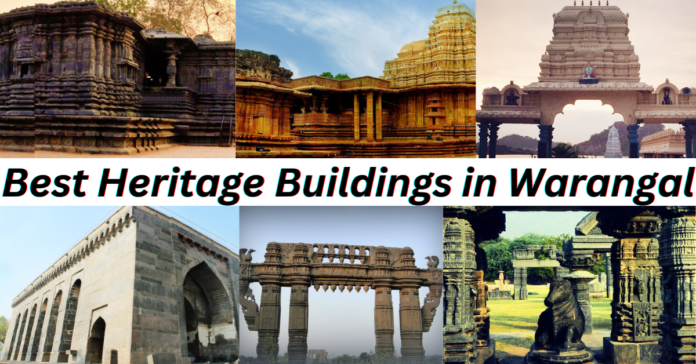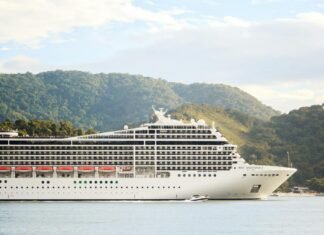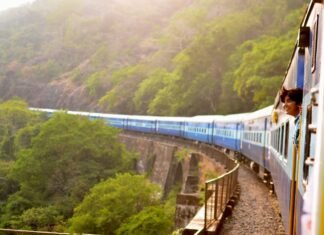Introduction
Warangal, a city in the Indian state of Telangana, is renowned for its rich historical and cultural heritage. The city served as the capital of the Kakatiya dynasty. It is dotted with magnificent heritage buildings that reflect the architectural brilliance of the past. This article takes you on a journey through some of the best heritage buildings in Warangal, offering a glimpse into the city’s glorious history.
Warangal Fort
Warangal Fort is a magnificent structure built in the 13th century by the Kakatiya dynasty, showcasing the architectural brilliance and strategic importance of that era. Constructed under the reign of King Ganapati Deva and later completed by his daughter Rudrama Devi. The fort served as a formidable defense against invading forces. Its most striking features are the grand stone gateways, known as “Kakatiya Kala Thoranam,” which are intricately carved and stand as symbols of Kakatiya’s artistic excellence.
These gateways are so iconic that they are depicted on the state emblem of Telangana. Within the fort complex, visitors can explore ancient temples and detailed sculptures. Warangal Fort is not just a historical monument but a testament to the rich cultural heritage and architectural genius of the Kakatiya Dynasty.
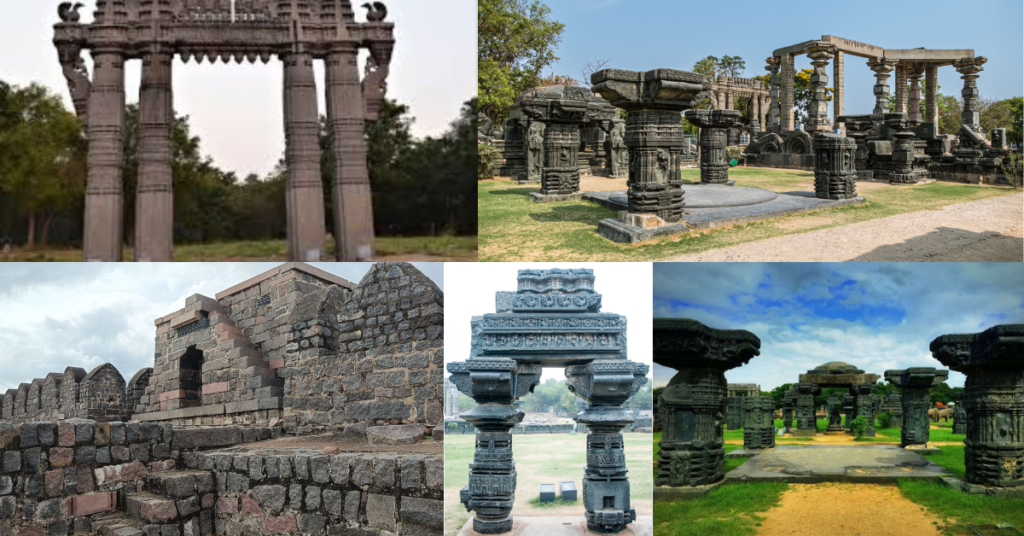
Also Read: Bhongir Fort: A heritage and beautiful place of Telangana
Thousand Pillar Temple
The Thousand Pillar Temple, also known as the Rudreshwara Swamy Temple. It is a stunning example of Kakatiya architecture located in Warangal, Telangana. Built in the 12th century by King Rudra Deva, the temple is dedicated to Lord Shiva, Vishnu, and Surya. Its name comes from the numerous intricately carved pillars that support the structure, each adorned with unique designs.
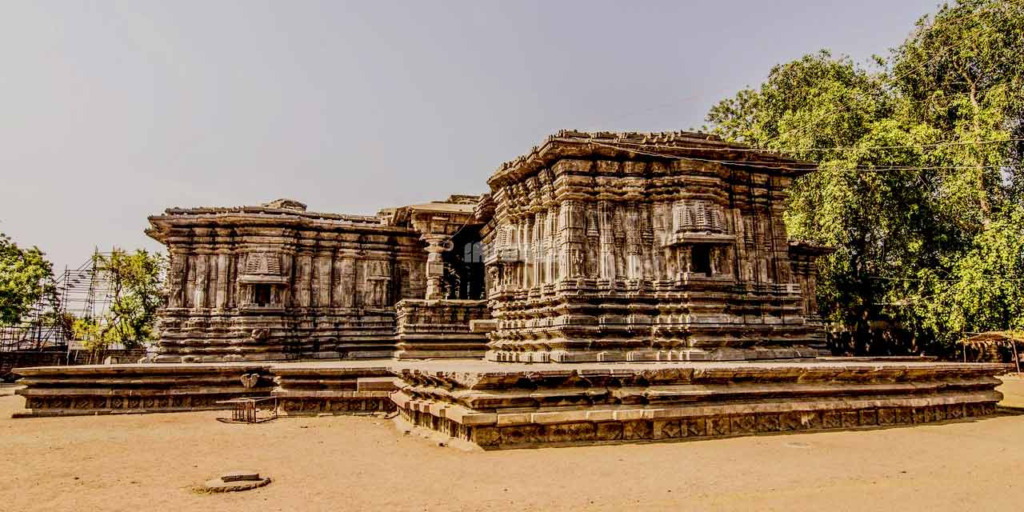
The temple features a star-shaped sanctum, elaborately detailed sculptures, and beautifully carved walls and ceilings. A notable highlight is the large Nandi statue, which showcases exceptional craftsmanship. The Thousand Pillar Temple is not just a place of worship but also a testament to the rich cultural and architectural heritage of the Kakatiya dynasty.
Ramappa Temple
Ramappa Temple, also known as the Ramalingeswara Temple. It is an exquisite piece of Kakatiya architecture located in the village of Palampet, near Warangal. Constructed in the 13th century under the reign of King Ganapati Deva and named after its architect, Ramappa. This temple is dedicated to Lord Shiva. One of its unique features is the use of floating bricks in the roof, which showcases the ingenuity of the builders.

The temple stands on a star-shaped platform and is adorned with intricate carvings that depict scenes from Hindu mythology. The pillars, ceiling panels, and walls are richly decorated with detailed sculptures, making the Ramappa Temple a true architectural marvel and a testament to the craftsmanship of the Kakatiya period.
Also Read: Discover the Rich Biodiversity of Kakatiya Zoological Park
Bhadrakali Temple
The Bhadrakali Temple, situated in Warangal, is a revered Hindu shrine dedicated to Goddess Bhadrakali, a form of the divine feminine. Dating back to the 8th century, this temple is known for its historical significance and spiritual importance. The temple features a beautifully carved idol of Goddess Bhadrakali, which attracts numerous devotees seeking blessings and divine intervention.

The architecture of the temple reflects traditional Kakatiya styles, with intricate carvings and a serene ambiance that enhances its spiritual atmosphere. Located on a hill, the temple also offers a stunning view of the surrounding landscape. The Bhadrakali Temple stands as a testament to the region’s rich religious heritage and continues to be an important pilgrimage site for many.
Khush Mahal
Khush Mahal, located within the Warangal Fort complex, is an impressive example of Indo-Islamic architecture from the 14th century. This palace was used as a royal residence and a venue for important events. The structure features arched doorways, domed ceilings, and decorative stucco work that blend Persian and Indian architectural styles. Its spacious halls and elegant design highlight the architectural fusion of the era, making Khush Mahal a significant and fascinating part of Warangal’s heritage.
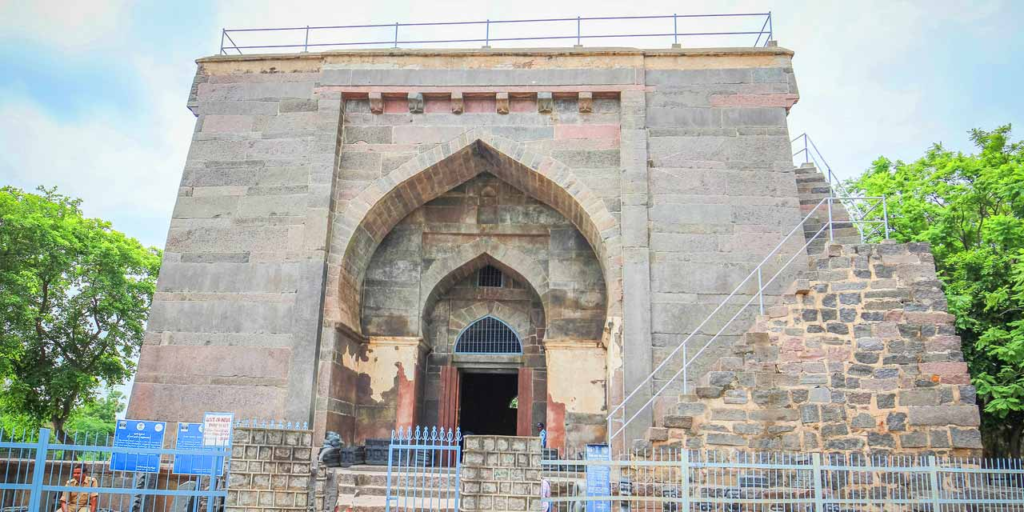
Padmakshi Temple
The Padmakshi Temple, situated on a hillock in Warangal, is a significant example of Kakatiya architecture. Built-in the 12th century, this temple is dedicated to Goddess Padmakshi and stands out for its serene location and intricate design. The temple features beautiful rock-cut sculptures and detailed carvings that highlight the artistry of the Kakatiya artisans. Its pillared hall and sanctum are adorned with elaborate artwork, reflecting the rich cultural heritage of the time. The elevated position of the temple provides a panoramic view of the surrounding landscape, adding to its charm and historical significance.

Kakatiya Kala Thoranam
The Kakatiya Kala Thoranam, also known as the Kakatiya Arch. It is a striking architectural feature that stands as a symbol of the Kakatiya dynasty’s grandeur. These intricately carved stone arches, found at the Warangal Fort, were built during the 13th century and are renowned for their exquisite craftsmanship.
The arches are adorned with detailed sculptures and designs that showcase the artistic skills of the Kakatiya builders. They are often depicted on the state emblem of Telangana, highlighting their cultural and historical significance. The Kakatiya Kala Thoranam not only represents the architectural excellence of the Kakatiya period but also serves as a reminder of the rich heritage and artistic achievements of that era.
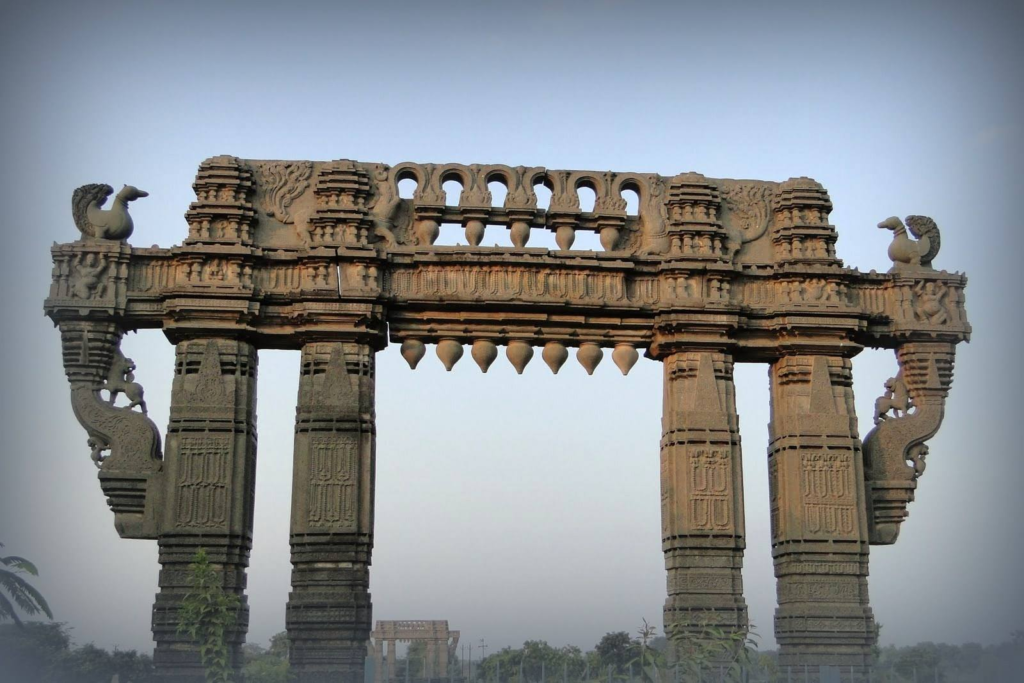
Conclusion
Warangal’s heritage buildings are a testament to the city’s rich historical and architectural legacy. From the grandeur of Warangal Fort and the intricate carvings of the Thousand Pillar Temple to the exquisite craftsmanship of the Ramappa Temple and the spiritual ambiance of the Bhadrakali Temple, each site offers a unique glimpse into the past. Visiting these heritage sites provides a deep appreciation for the artistic and architectural prowess of the Kakatiya dynasty and beyond, making Warangal a vital destination for anyone interested in India’s rich cultural heritage.
Frequently Asked Questions(FAQS)
A: The best time is from October to March for pleasant weather.
A: You can reach Warangal by air (via Hyderabad), train, or road.
A: Yes, guided tours can be arranged through local travel agencies.
A: Yes, Warangal offers a range of accommodation options from budget to luxury.
A: Nearby attractions include Ramappa Lake, Pakhal Lake, and Kolanupaka Jain temples.

